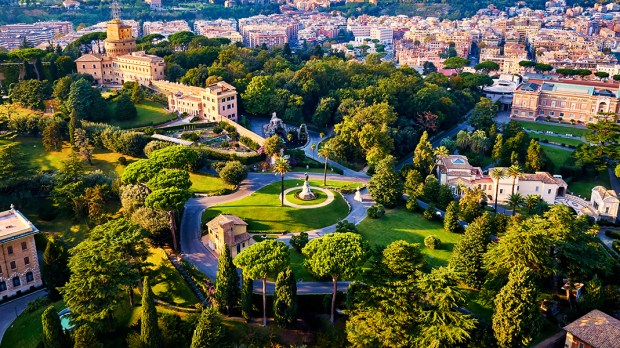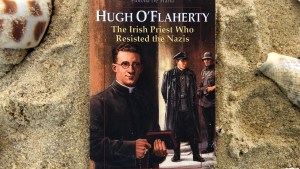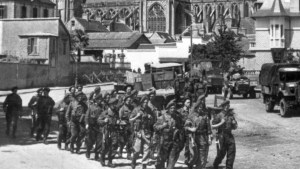In the early evening of November 5, 1943, the sound of an engine could be heard in the darkness above the Vatican. An unidentified aircraft was circling low over the small state, whose neutrality excluded it from the great world conflict in progress. At around 8 p.m., an Allied squadron appeared in the Roman sky, and the mysterious aircraft suddenly dropped five bombs, four of which fell on papal territory.
The first exploded near the railway station. The second destroyed a large part of the Vatican mosaic workshop. The third hit the façade of the Palazzo del Governo. Finally, the fourth hit a square behind the basilica, shattering the surrounding stained-glass windows to smithereens. The last one didn’t go off.
The bombs “weighed between 100 and 150 kg, (220 – 330 lbs, ed.) were highly explosive, burst immediately, and produced small craters but had a large range of action,” noted Cardinal Secretary of State Luigi Maglione the following day.
Great confusion
“There were no human losses,” reported Msgr. Domenico Tardini, the man in charge of Vatican diplomacy during the war. In his note, he points out that the bombs narrowly missed the buildings housing diplomats and the Vatican radio station.
It led to confusion at the Vatican. Who was behind the attack? Msgr. Tardini listed the four possibilities: the German Nazis, the Italian Fascists, the Americans, or the British. No one, officially, took responsibility.
The first suspects were the Americans. The high command of the US Air Force feared that two Mosquito aircraft might have been responsible for a blunder, and discreetly warned the Vatican. But General Eisenhower quickly informed the Vatican that these fears were unverified. He also blamed the Germans, who had shelled Naples the same night.
In the offices of the Secretariat of State, it was noted that November 5 was Guy Fawkes Day in the UK. This popular festivity commemorates the thwarting of the “Gunpowder Plot” on November 5, 1605, during which a Catholic conspirator named Guy Fawkes almost blew up Parliament while the King was in it. Did Perfidious Albion take advantage of the confusion to take revenge on the Papists?
British-made bombs
The Holy See then buried the matter, having been assured by American, British, Italian, and German officials that they would no longer fly over Vatican airspace. The promise was mostly respected, although on March 1, 1944, a British plane dropped a bomb right next to the Holy Office. It killed a worker in the small state and wounded a religious. However, the RAF admitted its error at the time.
The bombing on November 5, on the other hand, remained a mystery for a long time. Historians often attributed it to Britain, as the bombs were British-made. However, key information was not revealed until Italian historian Augusto Ferrara published his book 1943, Bombe sul Vaticano (“1943, Bombs on the Vatican,” 2010, Libreria Editrice Vaticana). In it, he revealed that a German diplomat had warned the Vatican at the time that he suspected the events to be the work of an important Italian fascist leader.
Italian fascists
Mussolini had just been deposed by his countrymen but then returned to power by the Nazis. Roberto Farinacci was a leader who belonged to the most radical wing of Mussolini’s followers. He was known for his anti-clericalism. The historian believes that it was he who masterminded the operation from the Viterbo airfield, north of the capital. An Italian priest’s testimony (discovered in 2016) seems to confirm this hypothesis. In any case, this explanation was immediately favored by the Vatican.
According to Ferrara, Farinacci wanted to blow up the Vatican Radio Tower because he believed that the Holy See was using it to inform the Allies. To conceal his action, which the Duce would not have approved of, the Fascist used English bombs.
But if the Holy See — and probably Pius XII — strongly suspected that this man was responsible for the bombing, why did they ultimately cover it up? In the opinion of several historians, the Holy See, in the midst of the Italian Campaign, wanted at all costs to avoid the attack on the Vatican being instrumentalized. It wanted to preserve its neutrality and avoid attracting attention. It therefore deliberately downplayed the importance of this attack, the only one actually suffered by the Holy See during the Second World War.
1943. Bombe sul Vaticano, Augusto Ferrara, (LEV, 2010)



